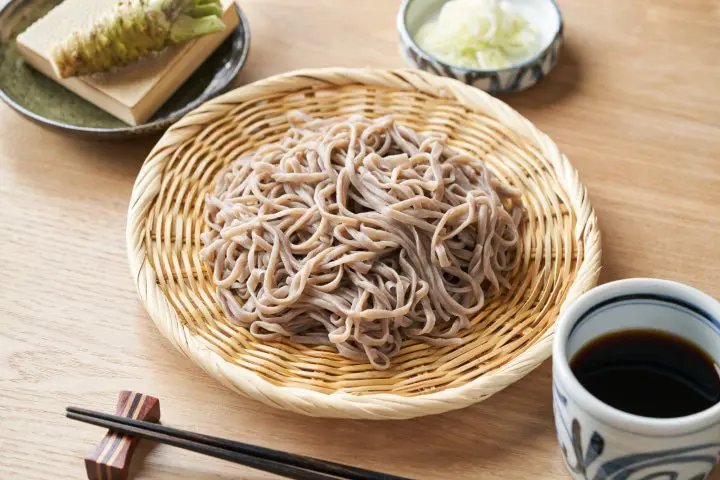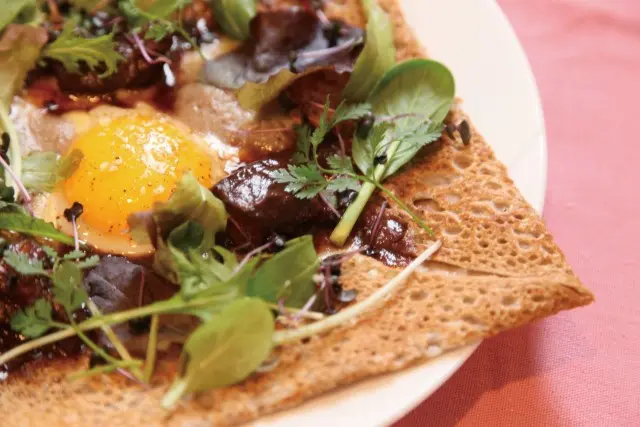Start planning your trip


Soba, a common Japanese dish, can cause allergic reactions in people who have never tried buckwheat before. But there is a fun way to check if you are allergic before setting foot in a soba shop!
Soba is one of Japan's most distinctive cultural foods.
With its rich aroma and pleasant texture, soba quickly becomes a favorite with visitors to Japan. As this delicious dish gains popularity overseas, we'd like to raise awareness about allergic reactions to soba.
Today we will explain the causes and symptoms of soba allergies, so that visitors to Japan can enjoy their trips safely.
Soba are noodles made from buckwheat flour; the type of buckwheat most commonly found in Japan and Asia being Fagopyrum esculentum. Soba noodles are generally made from a dough that combines buckwheat flour, wheat flour, and water. The dough is kneaded, cut into thin noodles that are roughly 1-2 mm in thickness, then boiled.
A pale grey-brown in color, these noodles preserve the distinct flavor of buckwheat, making them very distinct from other noodles. The flour ratio in most soba noodles is 8:2 (80% buckwheat, 20% wheat flour), which is known as nihachi soba in Japanese, while 100% buckwheat noodles are known as towari soba. The type of soba used varies from restaurant to restaurant, with each having a preferred ratio.
Kanda city, in Tokyo, is one of the best places to find famous and historical soba restaurants. Kanda Matsuya, which opened in 1884, is one of the best known.
While it may seem simple, soba can incorporate many different techniques and ingredients. Mori soba is one of the most popular forms, served as a 'mountain' (mori) of soba noodles on a dish with a dipping sauce called tsuyu, made from soy sauce, sugar and dashi. If you want to try soba on the go, you can also find instant soba and pre-packaged soba sets for sale in most convenience stores and supermarkets.
While packed with vitamin B2 and plenty of dietary fiber, the proteins contained in soba can cause severe allergic reactions in those who are sensitive to them.
In countries where people are not accustomed to eating soba, or other buckwheat-based products, awareness of this allergy is rare. Rarely, soba allergies can be as bad as peanut allergies. As a result, there are some who come to Japan and try soba for the first time, only to feel horribly ill afterwards.
If someone has this allergy, roughly 10 minutes after eating the soba the inside of their mouth will start to hurt and swell, with the itching spreading to their throat. As more time passes the symptoms can grow more severe. In the most extreme cases, anaphylactic shock may set in. If you are eating soba and suddenly start to feel your mouth tingle or the slightest bit of discomfort, you should stop eating, throw up whatever you have already eaten if at all possible and drink as much water as you are able.
If you are allergic to buckwheat protein, you don't necessarily have to eat soba in order to have an allergic reaction. There are many other Japanese foods that contain buckwheat flour. One category of foods to watch out for are traditional Japanese sweets, or wagashi. A light cookie known as a soba boro is a buckwheat cookie. Manjū with anko may be made from a combination of both buckwheat and wheat flour. Items like these are often sold as souvenirs or found in Japanese deserts alongside green tea in hotels and hot springs.
More recently, many cafes and restaurants have been serving buckwheat pancakes and galettes, so if you suffer from this allergy, you must be especially careful with your menu choices.
Luckily, there is a simple test to determine whether or not you are allergic to buckwheat.
Have you seen the Japanese Tattoo Soba Allergy Checker? Soba restaurants in Sapporo and Hokkaido, hoping to aid tourists to safely enjoy this traditional Japanese dish, co-operated in the development of these convenient temporary tattoos.
Designed to look like ukiyo-e, these tattoos are applied to the skin then brushed with the water that soba has been cooked in. After waiting a few moments, those with a buckwheat allergy will find that a portion of the tattoo has turned bright red.
In March of 2016, these tattoos were distributed among a group of tourists in order to test their effectiveness in determining whether the wearer had a soba allergy or not. Not only where they effective, but the simplicity of the test and the brilliance of the design made them very popular!
Soba allergy awareness events are being planned and it is hoped that soon these fun and useful tattoos will be available at soba shops all across Japan.
All pictures from Pixta
Written by
日本への訪日外国人の方が、もっと増えますように!


